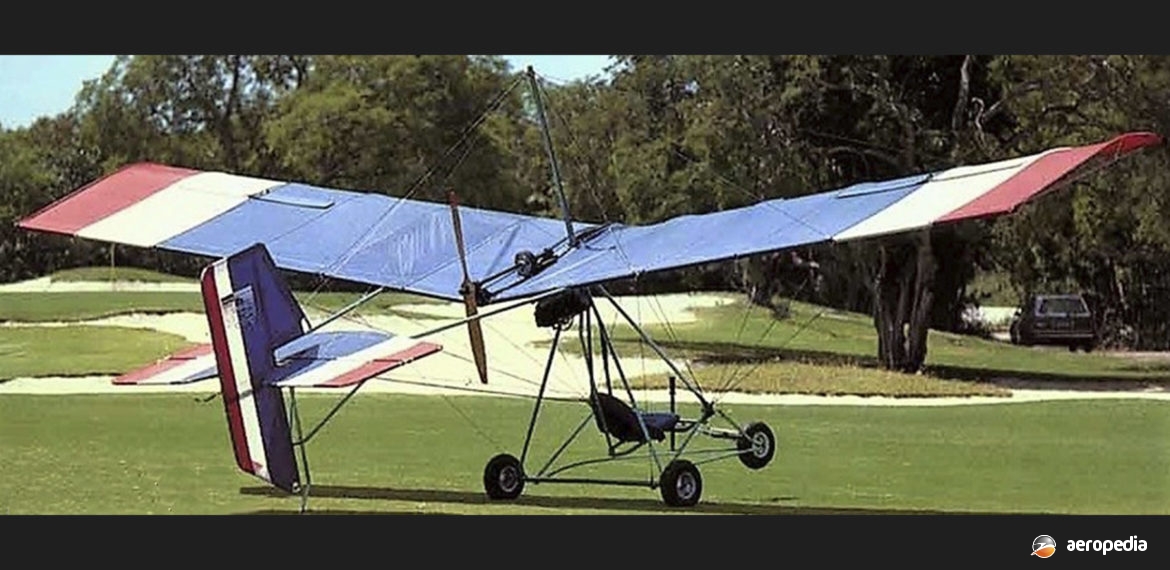Photograph:
A Seahawk Condor in the United States (Author’s collection)
Country of origin:
United States of America
Description:
Two-seat light sport aircraft
Power Plant:
(Condor III)
One 30 kw (40 hp) Kawasaki 440 two-cylinder, in-line, two-stroke converted snowmobile engine
Specifications:
- Wingspan: 9.8 m (32 ft)
- Wing area: 15.6 m² (168 sq ft)
- Never exceed speed: 97 km/h (60 mph)
- Cruising speed: 89 km/h (55 mph)
- Stalling speed: 31 km/h (19 mph)
- Max glide ratio: 7:1
- Rate of climb: 236 m/min (775 ft/min)
- Wing loading: 15.8 kg/m² (3.24 lb/sq ft)
- Fuel capacity: 19 litres (4.2 Imp gals)
- Empty weight: 109 kg (240 lb)
- Loaded weight: 247 kg (545 lb)
History:
The Condor was a two-seat light sporting aircraft designed by Messrs Bud Head, Robert Carswell and David French of Seahawk Industries and was initially supplied in kit form by that Company, being basically a development of the Eipper Quicksilver series. Like many ultralight aircraft of the time, it was designed to meet US FAR 103 Ultralight Vehicle Regulationss which included an empty weight of 115 kg (254 lb). The aircraft had a high wing which was cable-braced, an open cockpit, a tricycle undercarriage and a Kawasaki engine in the pusher configuration behind the cockpit. It was built from aluminium tubing which was bolted together, the wings and tail surfaces being covered in Dacron sailcloth. The wing was also cable-braced from a single tube kingpost and normal power plant installed was the Kawasaki 440, which itself was built for snowmobiles, with some work to make it suitable.
Two variants were produced, the Condor II and the Condor III, the former being a basic single-seat variant, the latter being a two-seater which had some structural strengthening to take the extra weight and could be used for training. Eventually the production of the design was taken over by Condor Aircraft which for a period supplied the aircraft in kit form to amateur constructors. At least one example was imported to Australia, this becoming 10-1793 (c/n 83-111-2) in 1996 and being fitted with a Kawasaki 440 engine.

